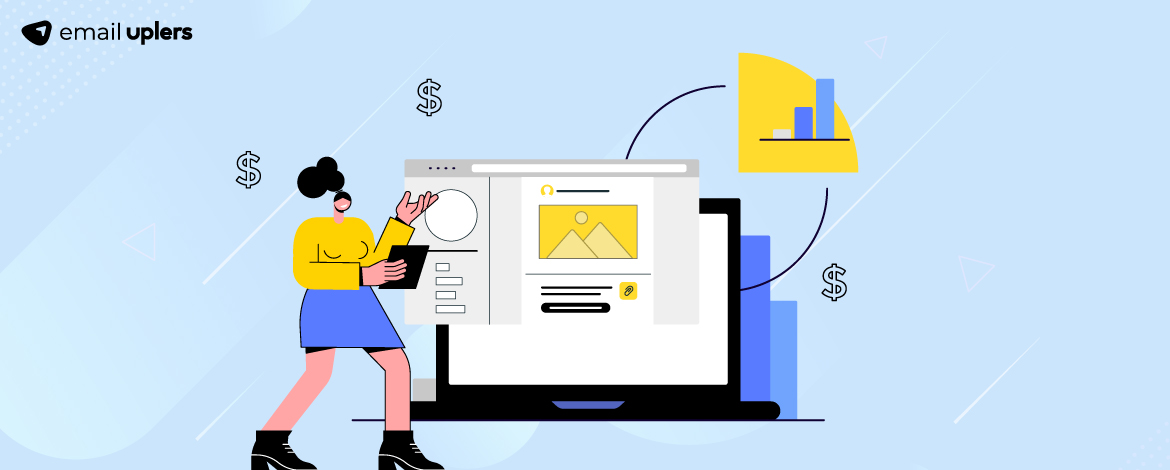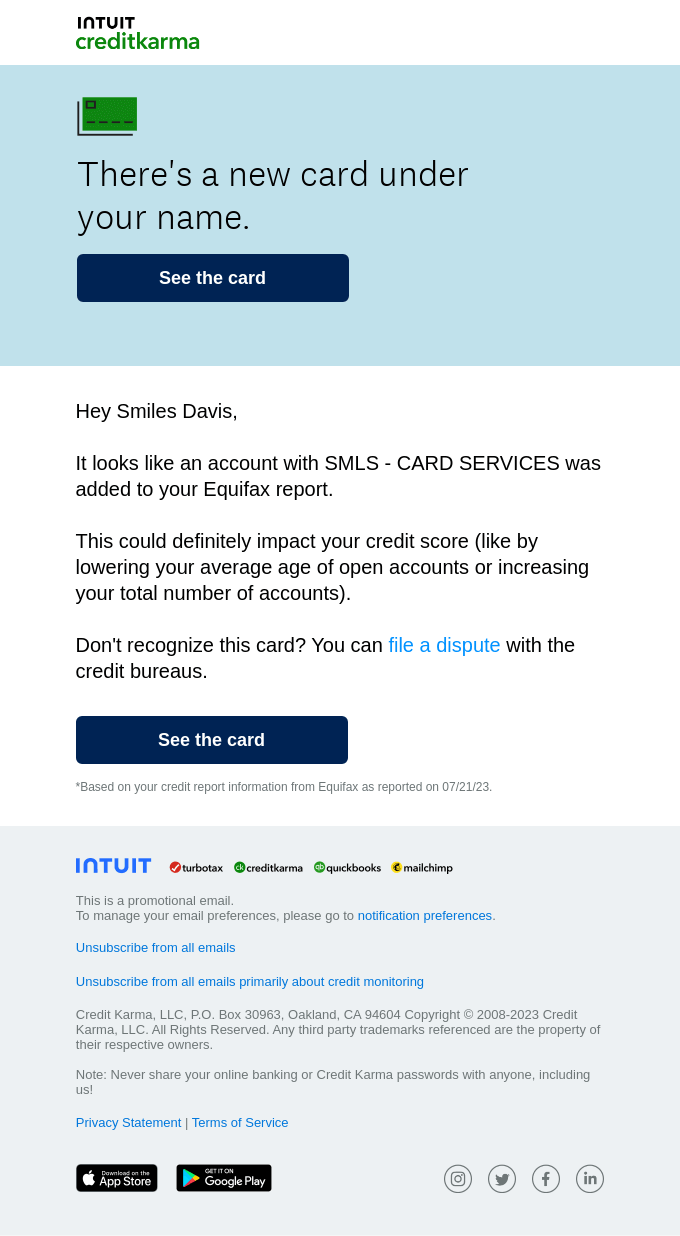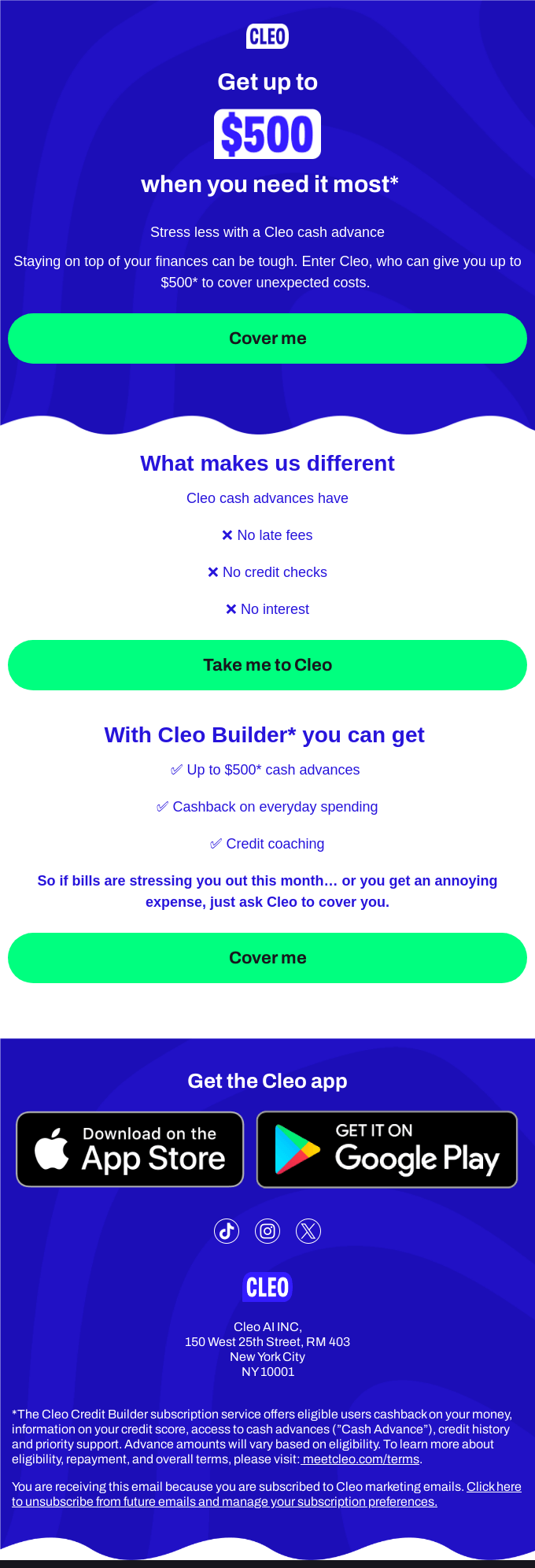More than any other niche, financial and fintech companies run on the fuel of trust. Trust is a many-layered word. It’s not just about being reliable, though it includes that. It also involves understanding your audience in order to anticipate their ever-evolving needs.
According to MX’s latest report, “What Consumers Really Want from their Financial Providers,” fintech consumers expect more personalized and connected experiences.
This is where email comes in – the paragon of personalization, which will help you build and cement trust among your audience. So, the main goal of fintech email marketing is inspiring trust. To that end, let’s explore how email can help you do just that.
1. Use Clear Copy for Transparent Communication
Transparency is the key to successful communication in finance. “A successful communicator must take their audience’s perspective into account to distill information and determine the most effective method for communicating with them,” writes Catherine Cote, marketing coordinator at Harvard Business School Online.
When you want to convey financial information, you need to choose the most optimum combination of words, semantics, tone, and length.
The visual arrangement of your email copy also determines the extent of its clarity. In the following example, Venmo conveys essential information in a bulleted list. Later in the email, Venmo uses bite-sized text to communicate the benefits of the Teen Debit Card.
The benefit? The subscriber can skim the content without losing sight of the info.
2. Share Relevant Content to Educate Your Audience
Email is great for sharing relevant resources with your audience. Blog posts, articles, interviews, surveys, expert analyses, etc., are some of the best ways to educate subscribers.
The content you share will signal the depth of your acquaintance with your niche. So, it’s an exercise in trust-building. You are establishing your brand as a thought leader in the industry.
You may also need to promote your services in the same email. Make sure to add it at the end of your email. Having persuaded the reader of your grasp of the market, you are now nudging them to view the promotional message and, hopefully, act on it.
That’s how MYND does it in their fintech newsletter. It begins with a link to a very useful blog post and ends with a promo strip.
3. Personalize Your Email Communications
AI-enabled personalization is now an integral part of fintech. According to Dealroom, in 2022, 18% of investment was dedicated to personalized financial management.
J.D. Power’s Banking Satisfaction report also stated that 78% of banking customers in the U.S. expect personalized experience from their banks.
The correlation between fintech and personalization assumes greater significance in light of data explosion. Today, fintech companies work with more consumer data than ever before. Traditional systems, however, cannot accommodate this additional data.
Email marketing for financial services can turn data availability into a competitive advantage and deliver personalized experiences. The following email perfectly illustrates this.
4. Announce New Product Features Instantly
The fintech industry is evolving rapidly. In 2023, the fintech niche was valued at an impressive $179 billion. What’s more, the industry is set to hit $492 billion by 2028.
In a recent McKinsey report, Lindsay Anan et al. says, “During this decade, fintechs have profoundly reshaped certain areas of financial services with their innovative, differentiated, and customer-centric value propositions, collaborative business models, and cross-skilled and agile teams.”
Email is best equipped to handle the evolution of fintech products and services. As a fintech company, you roll out new solutions on a regular basis. You can leverage email to promote new product features to your customers, just like Bitski does in this email.
5. Leverage Minimal Design for Maximum Impact
The way you design your email has a noticeable effect on your subscribers. As a fintech company, you want to use clean, unfussy templates, given the nature of your niche.
The emails we shared so far embrace minimalist design. In the fintech space, brand identity is not tightly definable. Apart from logos and other minor design elements, almost all fintech email marketing is characterized by sober design and heavy use of negative space.
To illustrate once again, consider the following email from Kiwi Wealth. The first content block uses a muted sea green, and the rest of the template is white. It’s short and simple.
6. Include Clear, Prominent Calls to Action
The CTA is the most important part of your email. The CTA button acts like a transition point: upon clicking it, the viewer will be redirected to your website. So, the subscriber moves from one touchpoint to the next.
The ultimate objective of selling your financial services through email marketing is to convert subscribers to paying customers. So, the call to action is really a call to conversion.
You want to make your CTA button clear and prominent. Make sure the CTA strip specifies where the viewer will be led upon clicking the button. The button should be well-padded so that mobile users can click it. Use bold colors to make it instantly noticeable.
In the following email, Cleo uses a well-padded, filled CTA button. The copy specifies the intention of the CTA, so the viewer knows exactly what will happen when clicking the button.
While there is no specified limit to the number of CTAs one can add in a single email, we recommend adding no more than three buttons. You don’t want to annoy or confuse the viewer.
7. Maintain Email Compliance at All Times
If you are new to email marketing for financial services, you must note that email compliance is non-negotiable. Every email you send must adhere to compliance regulations.
Make sure your email abides by the CAN-SPAM Act and the GDPR. In all our emails so far, you may have noticed the Unsubscribe link in the footer. Including it is mandatory. Make sure the link is prominently displayed and functional.
Here is an enlarged view of the Unsubscribe option from our previous example. As you can see, the option is made noticeable. The instruction is provided in unambiguous language.

8. Track And Monitor Your Email Campaign Performance
Keep tabs on the performance of your campaigns over time. Observe what is working and what isn’t. Focus on the most relevant metrics, such as open rates, click-through rates, conversion rates, unsubscribe rates, etc.
The point of email analytics is to provide you with a sound perspective of your marketing strategy. You can use the information to modify your tactics and improve your performance. The success of email campaigns depends on how well you can leverage analytics data.
Wrapping Up!
Integrating email marketing into your digital marketing strategy can transform the way you promote your fintech company. Email is affordable, lucrative, and great for targeted marketing – the right mix for inspiring trust among your trusted audience.











Susmit Panda
Latest posts by Susmit Panda (see all)
A Step-by-Step Guide to Integrate ChatGPT into Mailchimp for Maximizing Engagement
Expert Guide: Creating Dynamic Emails in Klaviyo